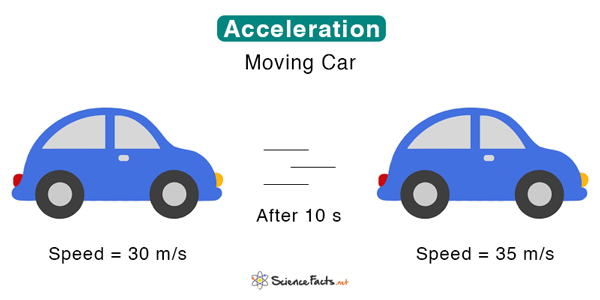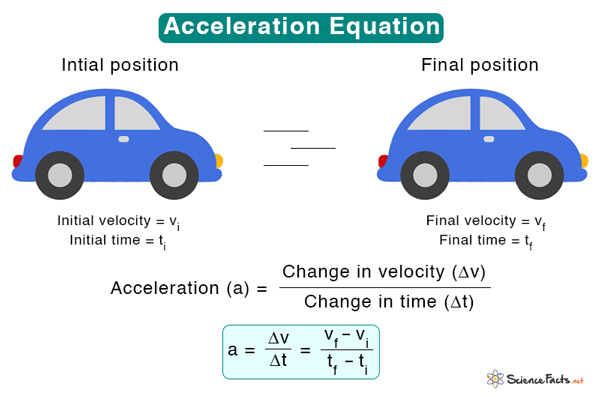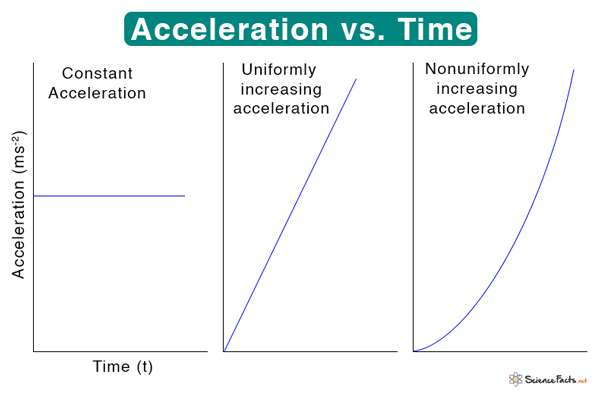To understand acceleration, let us take a numerical example. An object starts from rest and picks up speed such that its velocity becomes 5 m/s in 10 seconds. It took 10 s to go from 0 m/s to 5 m/s. Then, the rate at which its velocity changed is: (5 m/s – 0)/10 s = 0.5 m/s2. Therefore, its acceleration is 0.5 m/s2.
Examples
Equation
Direction of Acceleration
Example Problems
Where Δv: Change in velocity Δt: Time interval over which the change occurred SI Unit: meters per second squared or m/s2 Imperial unit: feet per second squared or ft/s Note:
Instantaneous Acceleration
The average acceleration is measured over a long interval of time. On the other hand, instantaneous acceleration is the acceleration calculated for an infinitesimally small time interval. It can be found by setting the limit of the time interval in the above equation to zero. Therefore, acceleration is the first derivative of the velocity with respect to time. Note that the velocity is the derivative of distance (x) over time. We can rewrite the above equation as Therefore, acceleration is the second derivative of distance with respect to time.
Acceleration from Newton’s Second Law
Acceleration can also be calculated directly from Newton’s Second Law. According to this law, the net force (F) on an object is given by the product of its mass (m) and acceleration (a). Mathematically, it is represented by Rearranging this equation gives the acceleration a. Suppose the car makes a turn around a curve path. Its velocity vector will change. We can use the concept of vector resolution to study its acceleration. Its velocity vector can be resolved into two components. One component is directed toward the center of curvature of the curve path, called the radial velocity. Another component is perpendicular to the radial velocity, called the tangential velocity. The rate of change of radial velocity is called radial acceleration and is directed radially inward. The rate of change of tangential velocity is called tangential acceleration. It is directed tangentially to the point under consideration on the curve path, as shown in the image below. Suppose the car moves around a circular path. In that case, its radial acceleration is called centripetal acceleration, discussed in our article on centrifugal force. Solution: Given vi = 0, vf = 60 mph, Δt = 12 s Let us convert mph to m/s. 60 mph = (60 miles x 1.6 km/mile x 1000 m/km)/(1 hr x 3600 s/hr) = 26.67 m/s The acceleration is a = (vf – vi)/Δt = (26.67 m/s – 0)/12 s = 2.22 m/s Problem 2: A racehorse coming out of the gate accelerates from rest to a velocity of 14.0 m/s due in 1.90 s. What is its average acceleration? Solution: Given vi = 0, vf = 14 m/s, Δt = 1.9 s The acceleration is a = (vf – vi)/Δt = (14 m/s – 0)/1.9 s = 7.37 m/s



